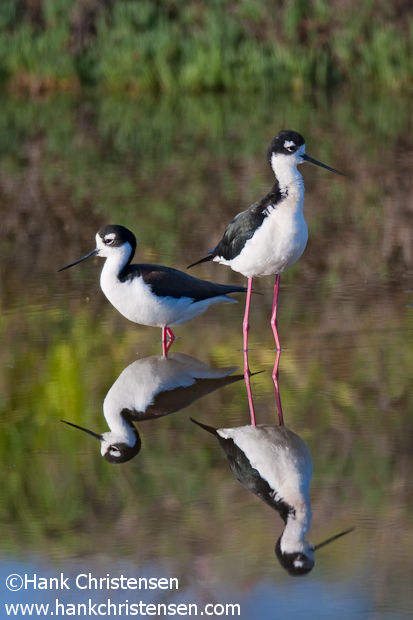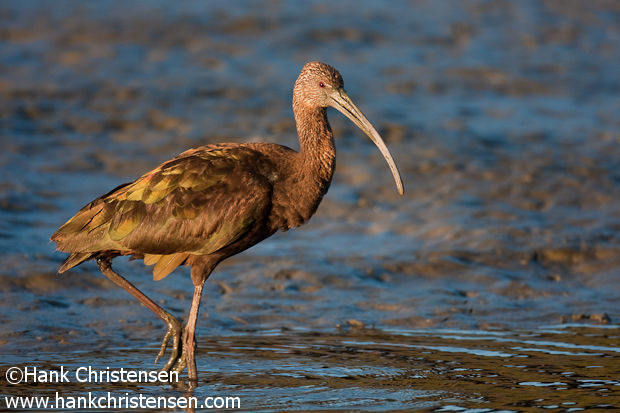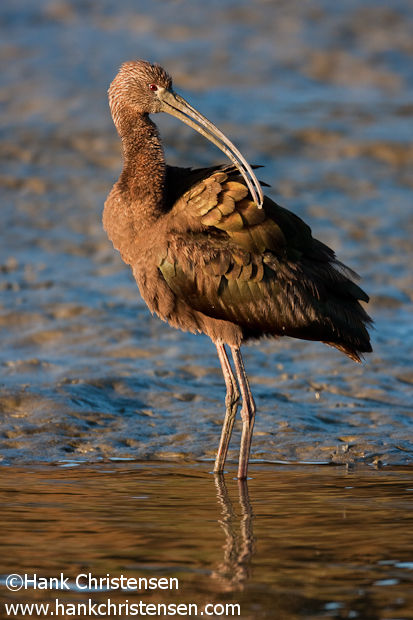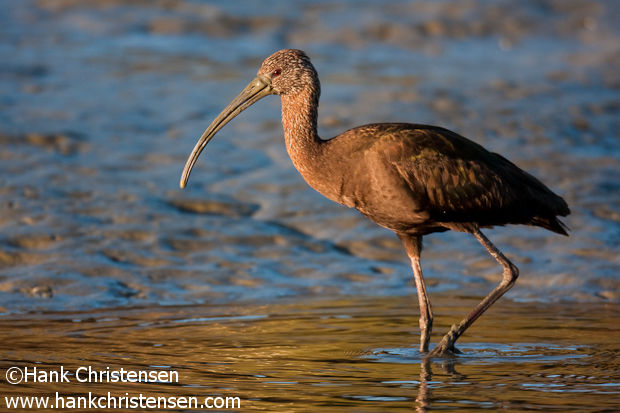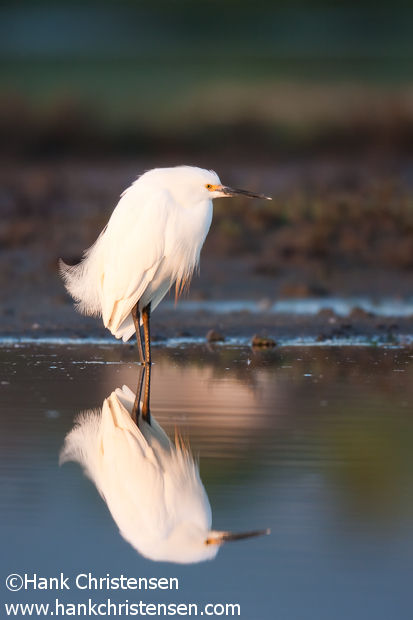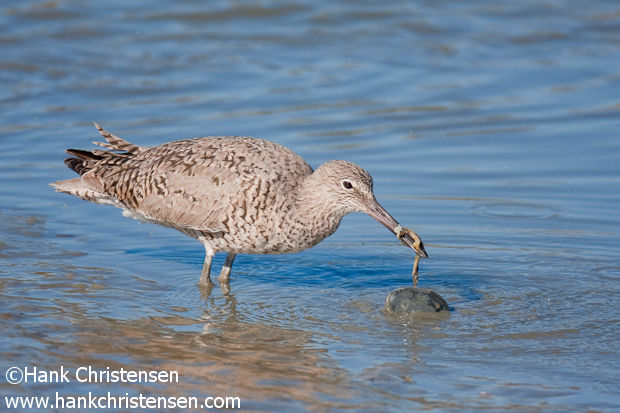
In taking this week’s photo, I had the opportunity to watch up close a willet’s feeding behavior when one opened a mollusk (probably a mussel) and pulled it out of its shell.
It started by moving to a likely area of shallow mud at the edge of a slough. Using its beak to poke repeatedly into the mud, it soon hit the hard shell and pulled the mollusk free. Then, it slipped the tip of its beak into the opening of the shell, and began to pry it open. Once it had a large enough opening, it was able to reach inside and grab the creature, shaking it back and forth through the water, most likely to clean it off, and shake it free of the shell. This process went on for a couple of minutes, the willet slowly extracting more and more of the mollusk from its shell. Finally, it was pulled free and vanished down the bird’s throat. Satisfied, the willet stalked off in search of other prey.

